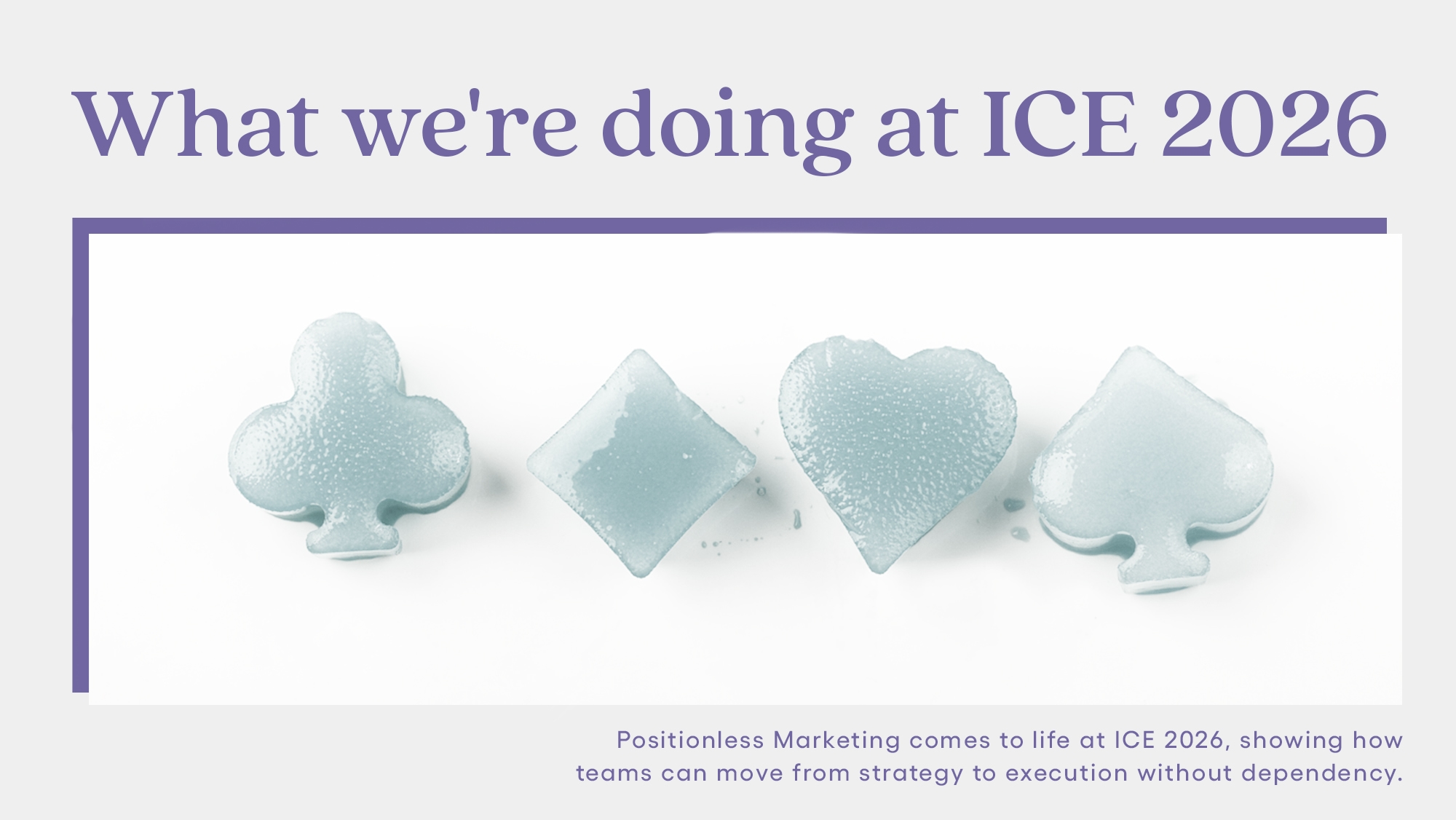
AI and the Retail Marketer’s Future
How AI transforms strategy and processes, driving the adoption of Positionless Marketing
Forrester: Optimove’s Total Economic Impact
Why it matters:
Traditional attribution models, such as First-Touch and Last-Touch, fall short in accurately gauging marketing campaign impact, risking credit misallocation. Optimove’s “Incrementality” offers a refined multi-touch attribution model using a test/control approach. Unlike weight assignment, Incrementality measures each touchpoint’s genuine impact and the overall journey, empowering marketers with statistically accurate insights for improved campaign setups and optimal allocation of marketing spend.

Key takeaways:
First-touch and Last-Touch models oversimplify the customer journey, potentially leading to misguided marketing strategies.
Optimove’s Incrementality model introduces a sophisticated approach, accurately reflecting touchpoint influence through a dynamic test/control framework.
Incrementality evolves with changes in customer behavior, ensuring relevance amid shifting marketing landscapes.
Gauging impact against control groups eliminates assumptions, providing concrete insights into each touchpoint’s contribution.
The study of attributions is relatively young. It began in 1958 when Fritz Heider, an Austrian psychologist, published a book called “The Psychology of Interpersonal Relations,” which included the first attribution theory. According to Heider’s theory, all people are naïve psychologists who try to find the causes behind actions and behaviors, and we are all susceptible to making errors in judgment when trying to attribute outcomes.
Unfortunately, attribution errors are something marketers know all too well, especially when dealing with one of marketing’s toughest challenges: revenue attribution. The main question of revenue attribution is how do you accurately measure each campaign’s and touchpoint’s relative impact on customer behavior? Getting the answer wrong – i.e., attributing outcomes to the wrong campaigns or touchpoints – is a dangerous proposition, as the ultimate goal is to optimize your marketing spend and campaign setup.
Several models try to help marketers get it right, but they all have their share of deficiencies. First-touch and last-touch attribution are the simplest and least accurate models. In the first-touch attribution model, 100% of the credit for the purchase goes to the campaign that drove the customer to come in contact with your brand. But think about it: can you really attribute the purchase to the first campaign and completely dismiss the campaigns that follow it? Of course not.
In the last-touch attribution model, 100% of the credit for the purchase goes to the final touchpoint before a prospect converts. But what if the customer made a purchase after being targeted for 3 months with emails, SMSs, Google and Facebook ads, and mobile push notifications – and was influenced by all the content and promotions sent to him/her/them? How can you give all the credit for the purchase just to the last campaign?
A more sophisticated approach would be to measure each campaign’s relative and combined impact, using a multi-touch attribution model.
Multi-touch attribution models are based on assigning “weights” (credit) to touchpoints in proportion to their impact on outcomes; for example, 20% of the credit goes to email campaigns, 30% to Facebook ads, etc.
But the problem is that assigning attribution weights can be error-prone, as identifying the touchpoints that have the most impact on conversions is challenging.
And so, what if we told you there’s a better way to go about it? One that accurately measures the impact of each touch point and the aggregate impact of the entire journey; that doesn’t require assigning weights; that is continuously updating itself to reflect changes in customer behavior, campaign fatigue, seasonality, etc.; and that measures itself against the baseline behavior of your customers (i.e., doesn’t take credit for purchases that would have happened anyway, even without these campaigns)?
Sounds like magic. We call it “Incrementality,” and it’s based on the good ol‘ test and control measurement.
Here at Optimove, we usually use the term incrementality when discussing the real impact of campaigns, as opposed to measuring vanity metrics like opens and clicks. But you can apply the same approach to revenue attribution. The result would be the best multi-touch attribution model possible, or multi-touch attribution on steroids if you will.
Let’s look at this simple example to see how it works:
Imagine you have a 3-step journey of an email + SMS + email, with the customer making a $100 purchase after the last campaign.
In the last-touch attribution model – which many marketing platforms use nowadays, unfortunately – the first two campaigns get zero credit for the purchase, while campaign 3 gets 100% of the credit.
And so:
In Optimove’s model, the 3 campaigns are part of a stream with a 5% control group (i.e., 5% of the customers are not receiving campaigns, and we gauge their spontaneous behavior, which serves as the baseline).
For the sake of the example, let’s say that it turns out that some of the customers in the control group made purchases (which is something that always happens). That means – they made a purchase without getting ANY campaign.
Now let’s assume that the average order of customers in the control group is $70 – while the customer that did receive the 3-campaign stream averaged $100.
This means that the 3-campaign stream has an incremental uplift of $30 (because the average order of customers receiving the campaigns is $100).
You see, the campaigns alone were not responsible for $100. Just the $30 uplift against the statistically viable control group.
Now, the next step is applying the test/control approach to each campaign to measure its specific impact. Of course, each control group in the stream has to be representative. This means, for example, that the control group of campaign 3 contains customers that were targeted in campaigns 1 and 2 – so that the combined impact of the first two campaigns would already be baked into the baseline behavior of this group, allowing us to measure the incremental uplift of campaign 3.
With that in mind, we can measure each campaign’s average uplift per customer!
Let’s assume the $30 uplift is split as follows: $5 for campaign 1, $15 for campaign 2, and $10 for campaign 3. Given that the overall uplift of the entire stream is $30, campaign 1 would get 17% (5 out of 30) of the credit, campaign 2 would get 50% of the credit (15 out of 30), and campaign 3 would get 30% (10 out of 30).
Now you have the most statistically accurate way to determine each campaign’s impact on your revenue. No bullshit, not assumptions. No terrible ideas like putting all the credit for the goal scored on the striker who kicked it while neglecting the rest of the team that help set it up.
The good news is that this model exists – it’s baked into the way Optimove empowers marketers to execute smart CRM/Retention marketing strategies.
In Optimove’s model, which measures the incremental value of the entire stream AND of each campaign in the stream, the impact of campaign 3 on conversions is only 30% – not 0% and not 100%.
In the last-touch attribution model, on the other hand, campaign 3 gets ALL the credit for the conversions – and would therefore be the one the marketer decides to double down on. Now that’s what we call an attribution error.
Forrester: Optimove’s Total Economic Impact
The Forrester Total Economic Impact™ Study shows that Optimove’s Positionless Marketing Platform drives an 88% boost in campaign efficiency.


Shai Frank serves as the SVP of Product and GM of the Americas at Optimove. Since his start in 2018, Shai has played a pivotal role in shaping the vision, strategy, and roadmap for Optimove’s product portfolio. Under his leadership, the product department is designing and delivering innovative customer-led marketing solutions that have been instrumental in elevating the success of Optimove’s clients.
Shai brings a wealth of experience from nearly 20 years in product leadership and management across various industries. He holds a B.Sc. in Industrial Engineering and an MBA from Tel Aviv University in Israel.


